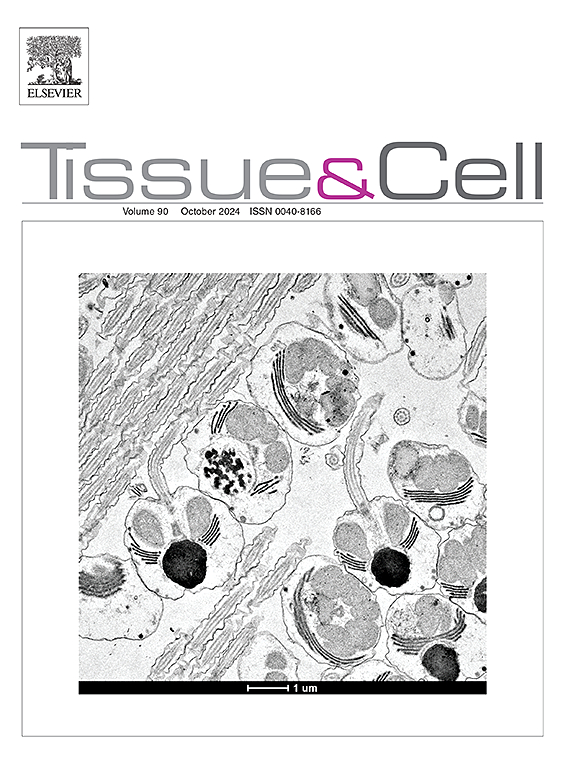Chinese Tuina ameliorates muscle damage by regulating endoplasmic reticulum stress and autophagy in a rat model of skeletal muscle contusion
IF 2.7
4区 生物学
Q1 ANATOMY & MORPHOLOGY
引用次数: 0
Abstract
Chinese Tuina has been used to treat skeletal muscle contusion (SMC) for a long time in China, yet its efficacy and mechanisms remain unclear. Previous studies have shown the vital roles of endoplasmic reticulum (ER) stress and autophagy during injured skeletal muscle recovery, we postulated that Chinese Tuina could expedite the healing of SMC by fine-tuning these processes. In this study, we established a rat model of SMC through weight-dropping and divided the rats into three groups: SMC, SMC+Tuina, and SMC+Tuina+ 3-methyladenine (3-MA) groups, while using untreated normal SD rats as a control. We assessed gait and edema via CatWalk gait analysis and swelling measurements, respectively. Tumor necrosis factor-α (TNF-α) expression was determined by immunohistochemistry (IHC). Morphological and ultrastructural alterations in the damaged muscle tissue were examined using hematoxylin and eosin (HE) staining and transmission electron microscopy (TEM), respectively. Expression of GRP78, LC3B and FAM134b was determined by western blot, and Colocalization of LC3B and FAM134b was examined by immunofluorescence. SMC+Tuina exhibited significantly improved gait and reduced edema. SMC+Tuina showed improvements in morphology and ultrastructure of damaged muscles, as well as decreased expression of TNF-α. Additionally, in SMC+Tuina, expression of GRP78 was downregulated, while expressions of FAM134 and LC3B were upregulated, and colocalization of FAM134 and LC3B was also enhanced. However, autophagy inhibitor 3-MA weakened the aforementioned effects of Chinese Tuina. The obtained results indicated that Chinese Tuina has a positive therapeutic effect in rats with SMC, potentially by promoting autophagy to reduce inflammation and ER stress.
求助全文
约1分钟内获得全文
求助全文
来源期刊

Tissue & cell
医学-解剖学与形态学
CiteScore
3.90
自引率
0.00%
发文量
234
期刊介绍:
Tissue and Cell is devoted to original research on the organization of cells, subcellular and extracellular components at all levels, including the grouping and interrelations of cells in tissues and organs. The journal encourages submission of ultrastructural studies that provide novel insights into structure, function and physiology of cells and tissues, in health and disease. Bioengineering and stem cells studies focused on the description of morphological and/or histological data are also welcomed.
Studies investigating the effect of compounds and/or substances on structure of cells and tissues are generally outside the scope of this journal. For consideration, studies should contain a clear rationale on the use of (a) given substance(s), have a compelling morphological and structural focus and present novel incremental findings from previous literature.
 求助内容:
求助内容: 应助结果提醒方式:
应助结果提醒方式:


